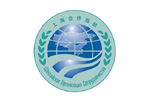Yearender: Regional cooperation in East Asia embraces fresh opportunities
(Xinhua) Updated: 2015-12-18 11:39KUALA LUMPUR -- With the resumption of the China-Japan-South Korea trilateral leaders' meeting, the further implementation of China's "Belt and Road" initiative and the forthcoming establishment of the ASEAN (the Association of Southeast Asian Nations) Community by the year end, regional cooperation in East Asia has ushered in a new era of fresh opportunities in 2015.
Thanks to the deepening communication and coordination between various countries in the region, the East Asia cooperation has seen more and more rapid progress, which will inject impetus into the social development and economic growth of the countries in the region.
ASEAN INTEGRATION
ASEAN announced in November at its 27th summit that the ASEAN Community, comprising the Political and Security Community, the Economic Community and the Socio-Cultural Community, will be established on Dec. 31, 2015.
In a bid to realize this blueprint, the ASEAN member states have made tax cut to each other. At the same time, they have also reduced non-tariff barriers, coordinated technological regulations and standards, and simplified customs procedures, significantly boosting the free flow of commodities, service, investment, labor and capital in the region.
Actually, with its 600 million-plus population and huge market, the integration of ASEAN has played a very positive role in the East Asia cooperation.
"As ASEAN is playing a dominant role in the East Asia cooperation, the building of ASEAN Community is at some degree one of the foundations of the East Asia cooperation," said Professor Yang Baoyun, a well-known scholar in Thammasat University of Thailand.
As a complex regional cooperation organization, ASEAN's development had provided experience to the formation of East Asia cooperation mechanism, he added.
Wichai Kinchong Choi, senior vice president of Kasikornbank, said that most ASEAN member states are still developing countries, which offers great commercial opportunities for East Asian countries with relatively advanced economies such as China, Japan and South Korea.
Many East Asian countries including ASEAN members have signed Free Trade Agreements with each other, which has promoted the regional trade and investment, the banker said.
Echoing Wichai's opinion, Oh Ei Sun, senior fellow at the S. Rajaratnam School of the International Studies of Singapore Nayang Technological University, said that the opportunities associated with the ASEAN Community, especially the ASEAN Economic Community, are wide ranging.
"The removal or reduction of tariffs among ASEAN countries over goods will almost certainly improve trade among ASEAN members at a time when internal ASEAN trade is only one-third of external ASEAN trade volume," he said, adding that a single ASEAN market and production base will also become an even more attractive foreign direct investment destination, and help better integrate ASEAN economy with the global economy.
CHINA-ASEAN COOPERATION
China is the ASEAN's largest trade partner, and ASEAN is China's third largest partner. Mutual investment has added up to more than 150 billion U.S. dollars, and the two sides are targeting their bilateral trade at 1 trillion dollars by 2020. With its robust development and huge potential, China-ASEAN cooperation has become one of the most important components of East Asia cooperation.
At the same time, the China-proposed "Belt and Road" initiative and the Asian Infrastructure Investment Bank (AIIB) have given new momentum to the regional cooperation.
The "Belt and Road" initiative and the AIIB are welcomed as they will help create greater connectivity in the region, while "assisting developing countries in much-needed infrastructure development", Malaysian Foreign Minister Anifah Aman said.
"We recognize that China has contributed significantly towards ASEAN community-building through its broad cooperation initiatives and the Initiative for ASEAN Integration," he said, adding that ASEAN's relationship with China is deep, multi-faceted and broad-ranging.
Oh also said that the ASEAN Economic Community (AEC) can work well with China's "Belt and Road" initiative as the two complement each other in enhancing regional and world prosperity and harmony. He said AEC can align well with the "Belt and Road" initiative.
It enables China to engage even more closely and easily with its closest neighbors as a whole when China carries out the "Belt and Road" initiative, Oh said, adding AEC will need large amounts of connectivity in land, on sea and in air to succeed, and the "Belt and Road" initiative can complement these efforts.
AEC as a whole can become a super hub for the "Belt and Road" initiative as China seeks to engage with countries as far as in South Asia, the Middle East and East Africa, he said.
COOPERATION MECHANISMS
The continuous development of economic integration has facilitated the creation of new cooperation mechanisms and promoted the upgrade of the current ones. China and the ASEAN have sealed a deal to upgrade their free trade area, and the negotiations on the Regional Comprehensive Economic Partnership (RCEP) and China-South Korea-Japan free trade agreement are also underway.
Yang said that RCEP could make great contribution to the East Asia cooperation and help optimize the mechanism of the ASEAN-China, Japan and South Korea (10+3) leaders' meeting.
"As the locomotives of the East Asian economy, the communication between the leaders of China, Japan and South Korea can help deepen mutual understanding and cooperation, as well as eliminate misapprehension, which will make great significance in East Asia cooperation," Wichai said.
The China-Japan-South Korea trilateral leaders' meeting resumed early in November, which provides new momentum to the 10+3 leaders' meeting, the main channel for East Asia cooperation.
The trilateral cooperation mechanism was restored after a three-and-a-half year hiatus due to heightened regional tensions.
In a joint declaration issued after the meeting, China, Japan and South Korea reaffirmed their commitment to holding the trilateral meeting on a regular basis.
While interpreting the meeting as a sign of thawing ties, experts in the region believe the resumption of the summit will help improve security and cooperation in Northeast Asia and also push forward free trade talks between the three countries.






